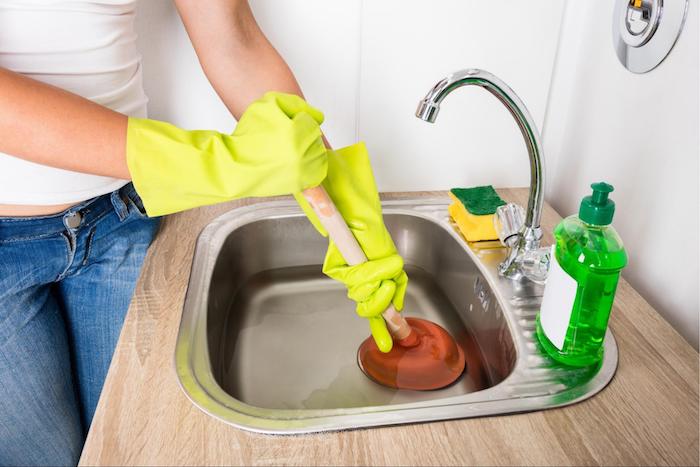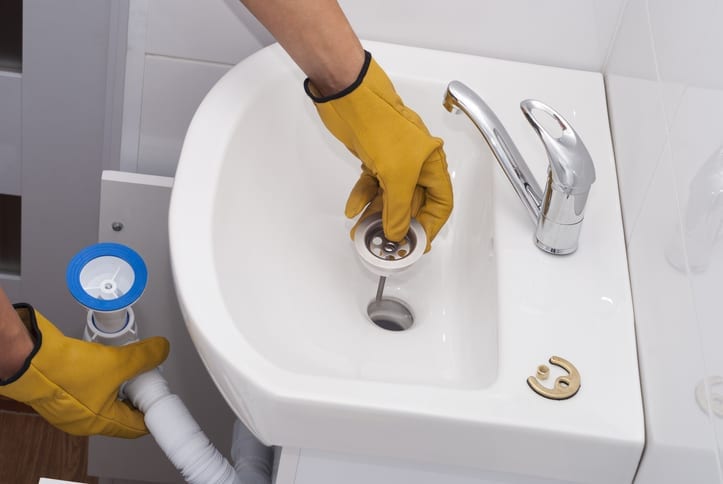Stuck With A Slow Sink - 6 Reasons Your Kitchen Drain Might Be Lagging
Stuck With A Slow Sink - 6 Reasons Your Kitchen Drain Might Be Lagging
Blog Article
We've uncovered this great article pertaining to Five Ways to Fix a Slow Sink Drain down the page on the net and accepted it made sense to write about it with you in this article.

It's not regular for your kitchen sink to congest numerous times in one month. If your sink blocks two times a week, there's some problem going on.
An obstructed cooking area drain does not simply slow down your duties, it degrades your entire plumbing system, little by little. Below are some common practices that urge sink blockages, as well as exactly how to prevent them.
You need appropriate garbage disposal
Reusing waste is fantastic, but do you take note of your natural waste also? Your kitchen ought to have 2 different waste boxes; one for recyclable plastics and another for organic waste, which can come to be garden compost.
Having a designated trash bag will certainly assist you as well as your family members stay clear of tossing pasta and other food remnants down the tubes. Normally, these residues absorb moisture as well as end up being obstructions.
The mistake isn't from your cooking area sink at all
Maybe the problem isn't from your kitchen area sink, however the whole drain system. In such an instance, you might see that sinks and drains get clogged every other week. You require a specialist plumbing solution to repair this.
You're tossing coffee down the tubes
Utilized coffee premises as well as coffee beans still take in a considerable quantity of wetness. They might appear small enough to throw down the drain, but as time goes on they begin to swell and also occupy even more room.
Your coffee premises need to go into organic waste disposal. Whatever fraction leaves (possibly while you're washing up) will be taken care of throughout your month-to-month cleaning.
You have actually been eating a lot of greasy foods
Your kitchen sink might still obtain obstructed despite organic waste disposal. This may be because you have a diet regimen abundant in oily foods like cheeseburgers.
This grease coats the insides of pipelines, making them narrower and also even more clog-prone.
Utilize a plunger
Your pipe had not been dealt with appropriately in the first place
If you've been doing none of the above, but still obtain normal blockages in your kitchen sink, you ought to call a plumber. There could be an issue with how your pipes were mounted.
While your plumber shows up, check for any leakages or irregularities around your kitchen pipelines. Do not attempt to fix the pipelines on your own. This may create a mishap or a kitchen area flood.
A person tried to wash their hair in the cooking area sink
There's a right time and area for whatever. The kitchen sink is simply not the best place to clean your hair. Washing your hair in the kitchen sink will certainly make it clog one way or another unless you utilize a drain catcher.
While a drainpipe catcher may capture the majority of the fallouts, some hairs may still survive. If you have thick hair, this may suffice to decrease your drainage and also ultimately create a blockage.
There's more dust than your pipes can manage
If you get fruits straight from a farm, you might notice even more kitchen dust than other people that go shopping from a mall. You can conveniently fix this by cleansing the fruits and veggies effectively before bringing them right into the house.You require proper garbage disposal
My Kitchen Sink Won’t Drain - What Should I Do?
If Your Sink Has a Garbage Disposal...
Turn on the disposal. If the disposal hums and doesn’t turn, then there’s clog in the disposal unit.
Go to your circuit breaker panel, and switch off the circuit breaker to your garbage disposal.
Back in your kitchen, double-check that your garbage disposal is off by trying to turn it on. The disposal should not move, and it should not make any noise.
Lie down underneath your sink so that you can see and access the bottom of the disposal unit. Look for a hole that looks like the head of a hex-head bolt in the center of the unit.
Place an Allen wrench inside this hole and turn it from side to side until you feel a decrease in resistance and are able to rotate the wrench completely in a single direction. This action rotates your disposal’s blade manually.
Put the wrench aside, and press the disposal unit’s reset button or switch.
Flip your garbage disposal’s circuit breaker switch back on, and turn on the unit to see if the obstruction has cleared. If it hasn’t, repeat the steps above until the obstruction is removed.
How to Unclog a Kitchen Sink Drain
If you have a double bowl sink, seal one side of the sink with an airtight lid or a second plunger before plunging the other side. Otherwise, you won’t be able to create adequate suction.
Place the cup of the plunger completely over the drain opening.
Turn on the faucet, and let the water run until it completely covers the cup of the plunger.
Start plunging by pushing the plunger down and pulling up again in order to build up suction. Make sure that the edges of the plunger stay in contact with your sink, or else you’ll lose the suction.
If you have trouble forming a seal between your sink and plunger, add petroleum jelly to the mouth of your plunger, and try again.
Plunge about five or six times before removing the plunger to see if water starts to drain properly. In some cases, you’ll even be able to feel the clog become dislodged while you plunge because suddenly there will be much less resistance. Repeat the plunging process until the clog clears.
Once water is draining properly again, run hot water down the drain for 5 minutes to help clear away grease, grime, and debris from the clog. https://www.plumbingjoint.com/blog/2019/august/my-kitchen-sink-won-t-drain-what-should-i-do-/

My Kitchen Sink Won’t Drain - What Should I Do?
If Your Sink Has a Garbage Disposal...
How to Unclog a Kitchen Sink Drain
https://www.plumbingjoint.com/blog/2019/august/my-kitchen-sink-won-t-drain-what-should-i-do-/
Do you enjoy more info about Why Is My Sink Not Draining?? Make feedback down below. We'd be interested to listen to your responses about this article. We hope that you come back again later on. Are you aware of somebody else who is enthusiastic about the topic? Why not promote it. Thank you for your time invested reading it.
Get A Free Quote
Report this page